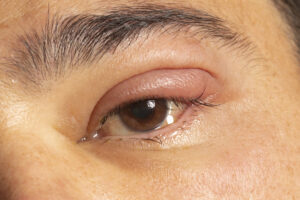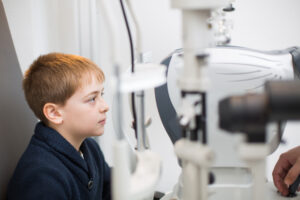Glaucoma is a common eye condition that results from damage to the optic nerve, which connects the eye to the brain. If glaucoma is not recognized and treated in its early stages, it can gradually cause a person to lose their vision. In most types of glaucoma, there is a hereditary increased-risk, linked with genetics.
The signs and symptoms of Glaucoma
Glaucoma typically does not produce any symptoms in the beginning stages of the disease. The peripheral vision is the first part of your vision to be affected, as this condition often develops gradually over several years. Because of this, many patients with glaucoma are unaware that they have it, and diagnosis is typically made during a regular eye exam.
If you do notice any symptoms, they may include vision changes such as blurriness, or the perception of rainbow-colored circles surrounding bright lights. In rare cases, glaucoma can abruptly appear and cause:
- acute eye pain
- nausea
- red eyes
- headache
- seeing a ring or halo around lights
- hazy eyesight
Causes
Damage to the optic nerve is the cause of glaucoma. As this nerve deteriorates over time, blind patches will begin to appear in your range of vision. In most cases, increased pressure in the eye is to blame for damaging the nerve.
An increase in the pressure within your eye is caused by a buildup of a fluid called aqueous humor, which circulates throughout the anterior (back) segment of your eye. This internal fluid would ordinarily drain out through a tissue called the trabecular meshwork.
If too much fluid is created, or the drainage system isn’t functioning correctly, then the liquid isn’t able to flow out of the eye at its normal rate, which causes an increase in ocular pressure. However, this is just one case of glaucoma; the etiology of glaucoma is not entirely understood.
Glaucoma is a disease that frequently runs in families. Researchers have pinpointed genes responsible for high eye pressure and damage to the optic nerve in specific individuals.
Types of Glaucoma
Open-angle Glaucoma
Open-angle glaucoma is the most common form of this disease. In open-angle glaucoma, the trabecular meshwork is partially occluded, so the drainage angle produced by the cornea and the iris continues to be open.
This results in a slow but steady buildup of pressure within the eye. This pressure damages the optic nerve. Since it progresses so gradually, affected individuals find that they’ve lost some of their vision before they realize there is an issue.
Angle-closure Glaucoma
Angle-closure Glaucoma, also known as closed-angle Glaucoma, is a kind of Glaucoma that arises when the iris protrudes forward and narrows or blocks the drainage angle between the cornea and the iris.
When this occurs, fluid cannot circulate properly, which increases pressure within the eye. Some individuals naturally have shallow drainage angles, which means they are at an elevated risk of angle-closure glaucoma.
Angle-closure glaucoma can develop quickly (known as acute angle-closure glaucoma) or gradually over time (chronic angle-closure glaucoma). Acute angle-closure glaucoma is a medical emergency that requires urgent care by an optometrist.
Normal-tension Glaucoma
Even when your eye pressure is within the usual range, you can still develop normal-tension glaucoma, which causes damage to your optic nerve. This can occur if your optic nerve is more sensitive than average, or receives a lower blood supply overall.
Glaucoma in children
Glaucoma can develop at any age, even in newborns and young children. Glaucoma can present from birth, or within the first few years of a person’s life. Injury to the optic nerve in babies and young children can be caused by drainage obstructions, or an undiagnosed underlying medical disease.
Pigmentary Glaucoma
When you have pigmentary glaucoma, pigment granules from your iris pile up in the drainage channels, which either slows or stops fluid from draining out of your eye. Jogging and other vigorous activities can agitate the pigment granules, which deposits them on the trabecular meshwork, increasing pressure in the eye.
Conclusion
Glaucoma is a chronic and progressive illness that frequently results in some degree of visual impairment over time. The earlier you detect glaucoma and begin treatment, the greater your chances of preserving your eyesight. Treatments can delay disease progression and prevent vision loss. Regular eye exams are essential if you are at high risk for glaucoma.








